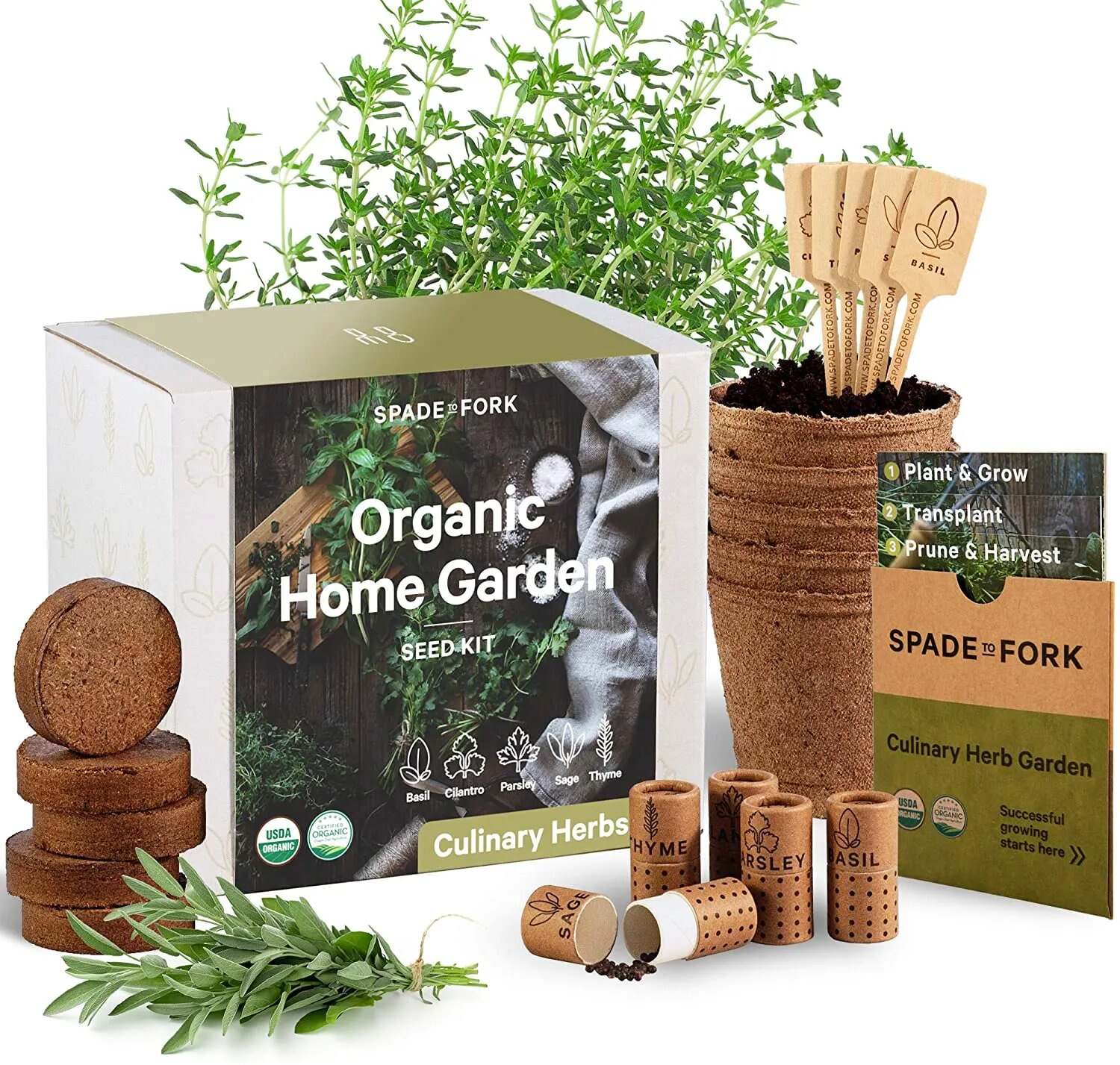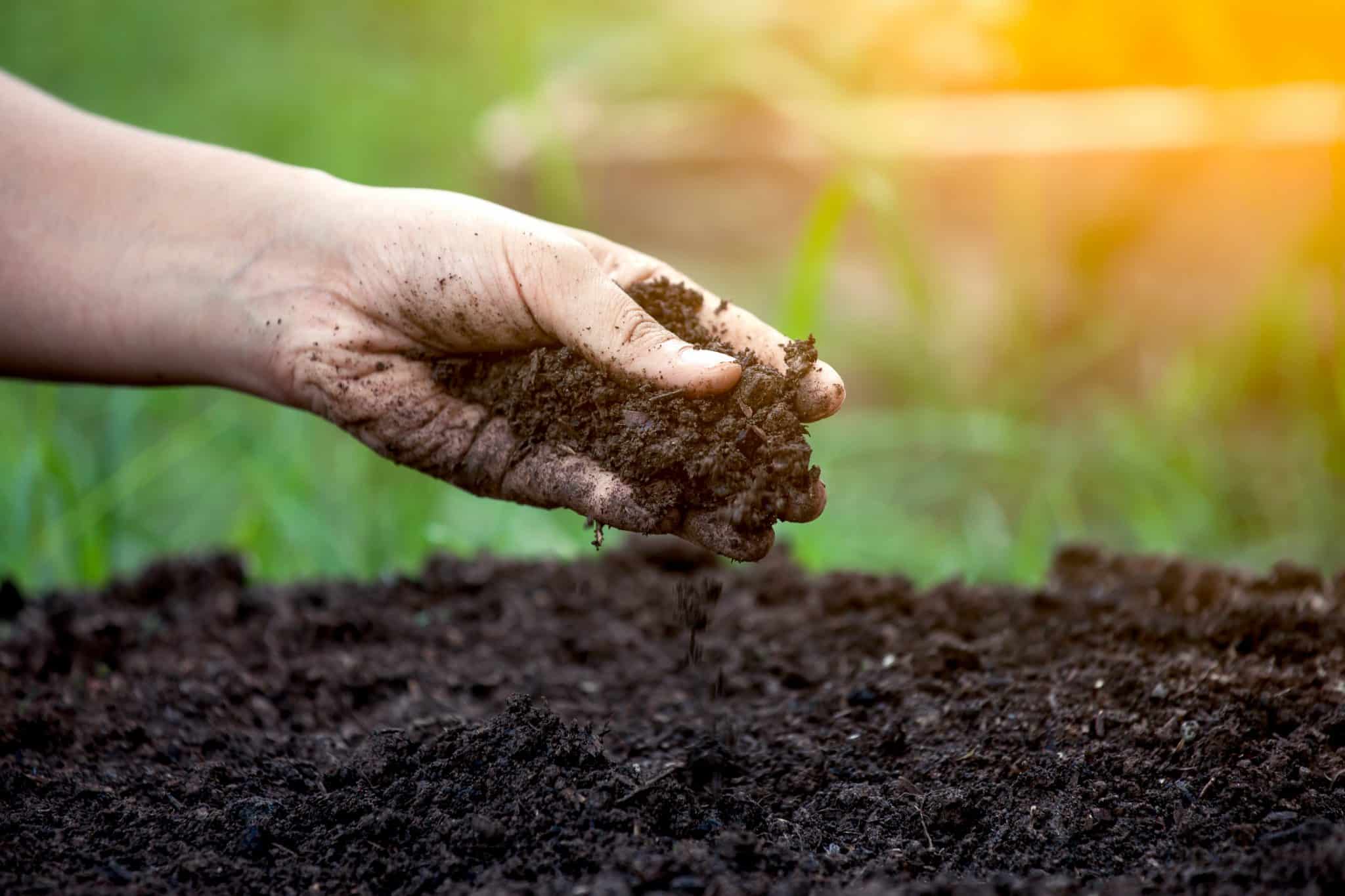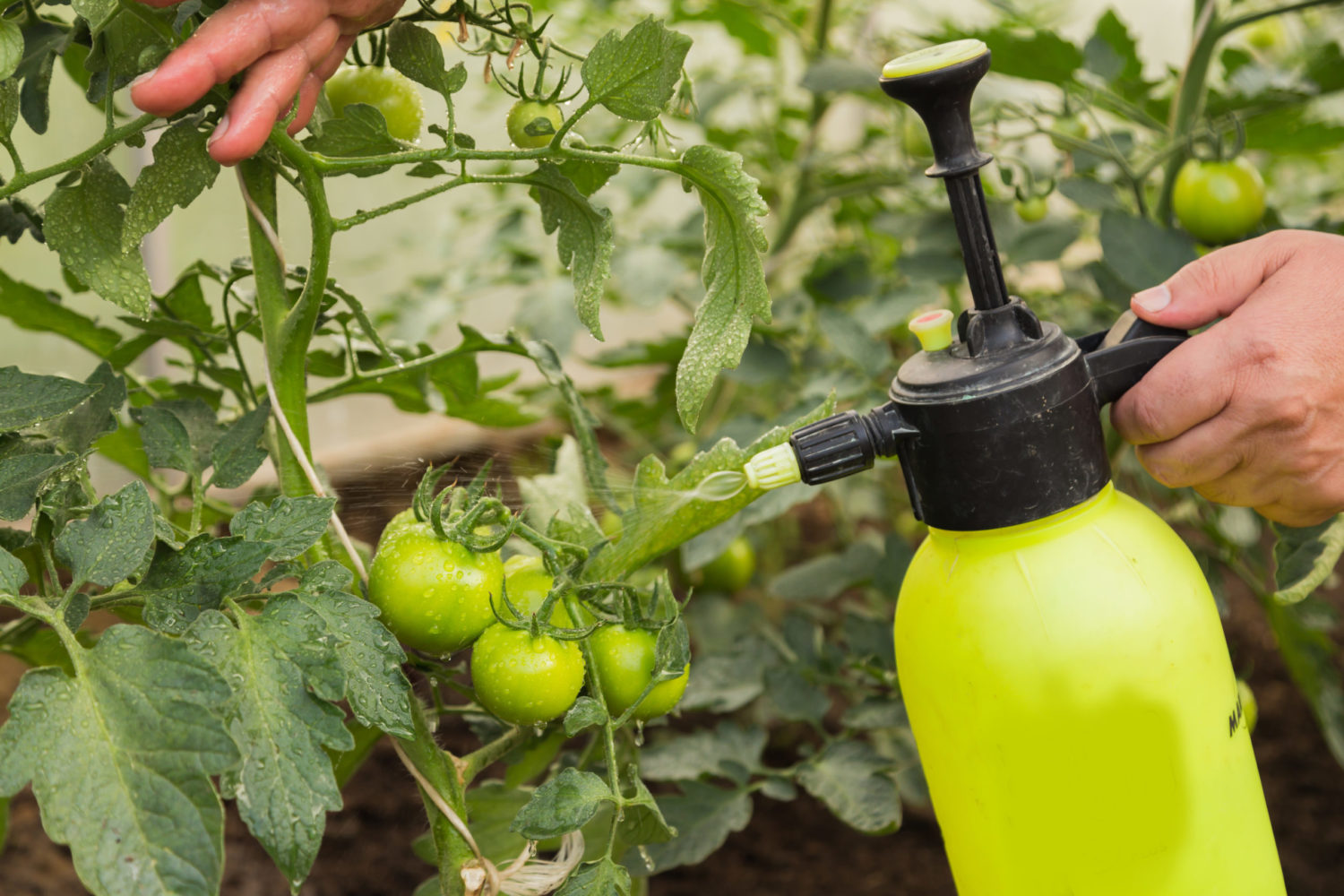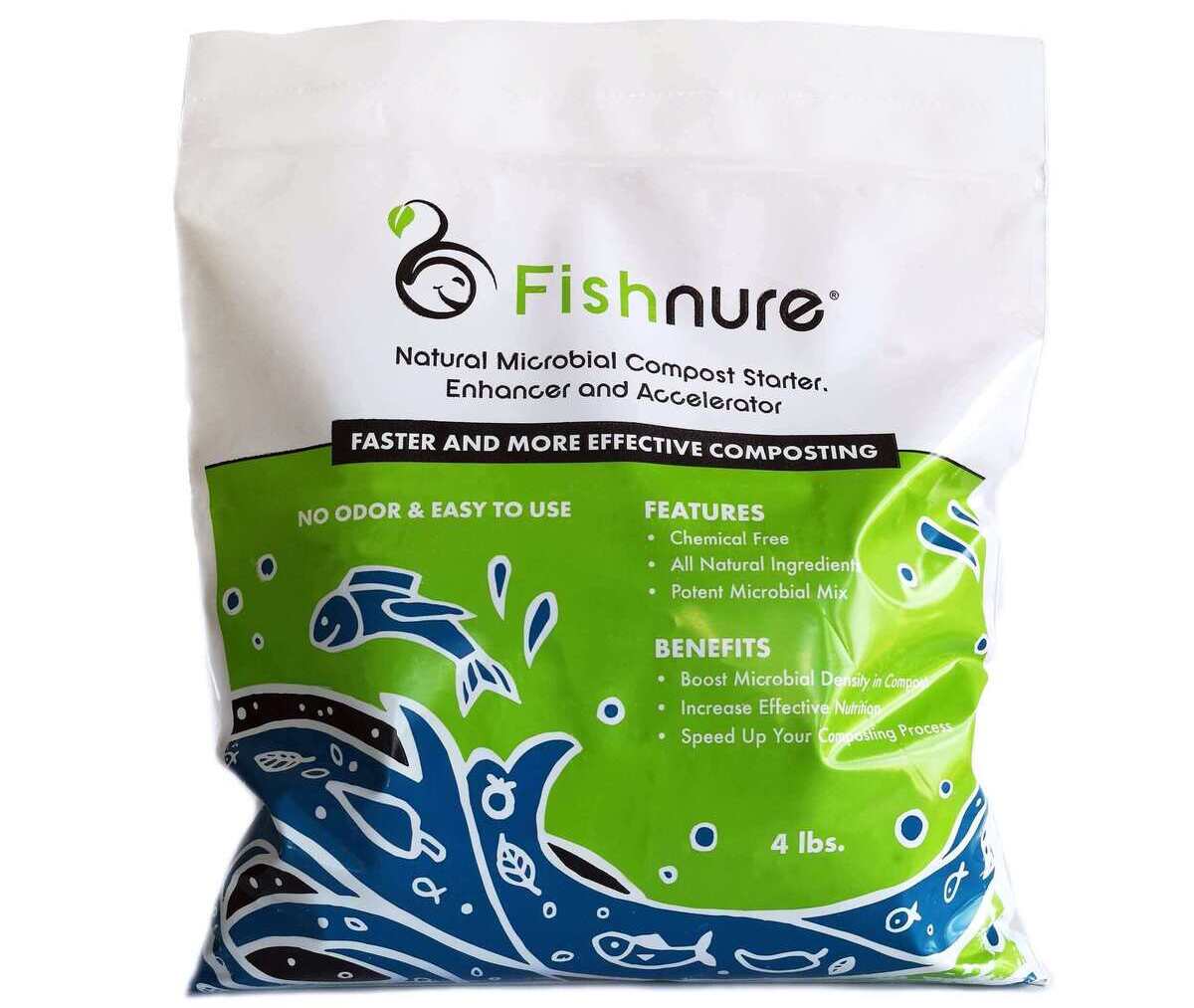Home>Gardening Tips and Tricks>What Is A Starter Fertilizer


Gardening Tips and Tricks
What Is A Starter Fertilizer
Modified: January 22, 2024
Maximize your yield with a starter fertilizer. Discover what a starter fertilizer is and how it can boost your crop production.
(Many of the links in this article redirect to a specific reviewed product. Your purchase of these products through affiliate links helps to generate commission for Chicagolandgardening.com, at no extra cost. Learn more)
Table of Contents
- Introduction
- Definition of Starter Fertilizer
- Purpose and Benefits of Using Starter Fertilizer
- Nutrient Composition of Starter Fertilizer
- Application Methods for Starter Fertilizer
- Timing of Starter Fertilizer Application
- Factors to Consider When Choosing a Starter Fertilizer
- Potential Drawbacks and Risks of Using Starter Fertilizer
- Conclusion
Introduction
When it comes to maximizing yield in agriculture, one crucial factor cannot be overlooked: fertilizer. An essential component of crop production, fertilizer provides plants with vital nutrients necessary for growth and development. Among various types of fertilizers available, starter fertilizer has gained popularity among farmers and gardeners alike.
Starter fertilizer, as the name suggests, is a specially formulated blend designed to kick-start plant growth during the early stages of development. It is typically applied during the planting process to provide nutrients directly to the young seedlings or transplants. This strategic approach ensures that plants receive the necessary nutrients right from the start, promoting strong root growth and overall vigor.
So, why is starter fertilizer so widely used? The answer lies in its ability to provide a targeted boost of essential nutrients, ensuring that plants have access to an adequate supply during the critical early stages of growth. By delivering nutrients in a readily available form, starter fertilizer helps plants overcome any initial nutrient deficiencies while also promoting healthy root development, ultimately leading to higher yields.
In addition to its ability to jumpstart plant growth, starter fertilizer offers several other benefits. First, it promotes uniform emergence, allowing for a more even stand of plants. This is especially crucial in dense plantings, such as row crops, where uniform spacing and growth can lead to effective weed control and optimize light and nutrient utilization.
Furthermore, starter fertilizer can enhance nutrient use efficiency. Since the concentrated application of nutrients occurs in close proximity to the developing seedling, the nutrients are easily accessible and utilized by the plant. This reduces the risk of nutrient losses through leaching or volatilization, resulting in a more efficient use of fertilizer inputs.
Lastly, utilizing starter fertilizer can also mitigate the impact of environmental stresses on early plant development. By providing a nutrient boost, plants are better equipped to cope with adverse conditions such as cold temperatures, drought, or poor soil conditions. This increased resilience can significantly improve crop establishment and overall yields.
In the following sections, we will delve deeper into the science and application of starter fertilizer. We will explore its nutrient composition, application methods, optimal timing, factors to consider when choosing a product, as well as potential drawbacks and risks. By understanding the ins and outs of starter fertilizer, you can harness its potential to maximize yield and optimize your agricultural practices.
Definition of Starter Fertilizer
Starter fertilizer is a type of fertilizer specifically formulated to provide essential nutrients to newly planted seedlings or transplants during their early stages of growth. It is typically applied in close proximity to the seed or root zone to ensure direct access to the developing plant.
The composition of starter fertilizers may vary, but they generally contain a blend of macronutrients, micronutrients, and sometimes additional additives. The macronutrients commonly found in starter fertilizers include nitrogen (N), phosphorus (P), and potassium (K). These nutrients are crucial for plant growth and play key roles in various physiological processes.
Phosphorus is particularly important in starter fertilizers as it supports root development, energy transfer, and promotes early growth. Since phosphorus is relatively immobile in the soil, providing a concentrated source through starter fertilizer is beneficial for young plants that have limited root systems.
In addition to macro and micronutrients, some starter fertilizers may also contain organic matter, beneficial microbes, or growth-promoting hormones. These additives are aimed at further enhancing root development, nutrient uptake, and overall plant vigor.
Starter fertilizers are available in different forms, including granules, powders, and liquids. The choice of form depends on the specific crop, planting method, and equipment used for application. Granular and powdered forms are often applied in the seed furrow or as a band alongside the seed row, while liquid forms may be applied through soil injection or as a foliar spray.
It is important to note that starter fertilizers should not be confused with complete fertilizers or soil amendments. While complete fertilizers contain a balanced blend of macro and micronutrients suitable for overall plant nutrition, starter fertilizers are specifically designed to meet the nutritional needs of young plants during the critical early growth stages.
By providing readily available nutrients to young seedlings or transplants, starter fertilizers give plants a head start, helping to overcome nutrient deficiencies, promote root development, and improve overall plant vigor. This targeted approach sets the stage for optimal crop establishment and ultimately higher yields.
Purpose and Benefits of Using Starter Fertilizer
The purpose of using starter fertilizer in agriculture is to provide essential nutrients directly to young seedlings or transplants during their early growth stages. By supplying a concentrated source of nutrients in close proximity to the plant, starter fertilizer offers several key benefits that contribute to maximizing yield and overall crop performance.
One of the primary benefits of using starter fertilizer is the promotion of vigorous root growth. Young plants have limited root systems, and supplying necessary nutrients directly to the roots through starter fertilizer enables them to establish a strong and extensive root system more efficiently. This enhanced root development facilitates better nutrient uptake, water absorption, and overall plant stability.
Another important advantage of using starter fertilizer is the stimulation of early plant growth and establishment. The concentrated nutrients provided by the fertilizer help to overcome any nutrient deficiencies and promote robust shoot growth. This leads to faster emergence, improved stand uniformity, and more vigorous early-season growth, setting the stage for higher crop yields.
In addition to promoting root and shoot growth, starter fertilizer also enhances nutrient use efficiency. By applying nutrients in close proximity to the young plants, the fertilizer minimizes nutrient losses through leaching or volatilization, ensuring that the nutrients are readily available for plant uptake. This targeted approach optimizes fertilizer utilization, reducing input wastage and improving cost-effectiveness.
Furthermore, the use of starter fertilizer can help mitigate the risks associated with adverse environmental conditions. Young plants are particularly vulnerable to stress factors such as cold temperatures, drought, or poor soil conditions. By providing a nutrient boost during the early growth stages, starter fertilizer strengthens the plants’ resilience and enables them to better withstand these challenges. This ultimately improves crop establishment and yields, even under less than ideal conditions.
Another advantage of using starter fertilizer is its impact on weed management. By promoting uniform plant emergence and early growth, starter fertilizer aids in the formation of a dense and healthy crop canopy. This helps to suppress weed growth by shading out competing plants, reducing the need for herbicide applications and minimizing the negative impact of weeds on crop yield.
Lastly, starter fertilizer can contribute to increased phosphorus availability in the soil. Since phosphorus is relatively immobile and can easily become bound to soil particles, applying a concentrated source of phosphorus through starter fertilizer ensures that young plants have access to this crucial nutrient during their early growth stages. This is especially beneficial in soils with low phosphorus availability or high amounts of phosphorus-fixing agents.
Overall, using starter fertilizer provides numerous advantages for growers looking to maximize crop yield and performance. From promoting root growth and early plant establishment to enhancing nutrient utilization and resilience to environmental stressors, starter fertilizer plays a crucial role in setting the foundation for successful and productive crops.
Nutrient Composition of Starter Fertilizer
Starter fertilizers are formulated to provide essential nutrients to young seedlings or transplants to support their early growth. The nutrient composition of starter fertilizer may vary depending on the crop’s nutrient requirements and the specific soil conditions. However, they generally contain a mix of macronutrients, micronutrients, and sometimes additional additives to optimize plant nutrition.
The macronutrients found in starter fertilizers are nitrogen (N), phosphorus (P), and potassium (K). These nutrients are essential for plant growth and play crucial roles in various physiological processes.
Nitrogen is important for promoting lush, green foliage and is actively involved in protein synthesis and energy transfer within the plant. Adequate nitrogen supply during the early growth stages is vital for supporting rapid shoot development and overall plant vigor.
Phosphorus is particularly important in starter fertilizers as it supports root development, early growth, and energy transfer in plants. It plays a crucial role in various metabolic processes, such as photosynthesis, nucleic acid synthesis, and energy storage. Since phosphorus is relatively immobile in the soil, providing it in the form of a starter fertilizer ensures direct access to young roots and promotes strong root development.
Potassium, often referred to as potash, is involved in numerous plant functions, including water regulation, enzyme activation, and nutrient translocation. It plays a critical role in overall plant health, stress tolerance, and disease resistance. Adequate potassium supply through starter fertilizer helps young plants establish their root systems, maintain turgor pressure, and support proper nutrient uptake for optimal growth.
In addition to macronutrients, starter fertilizers may also contain micronutrients, which are required in smaller quantities but are vital for various physiological processes. Common micronutrients found in starter fertilizers include iron (Fe), manganese (Mn), zinc (Zn), copper (Cu), boron (B), and molybdenum (Mo). These micronutrients are essential for enzyme activation, chlorophyll synthesis, and overall plant health.
Some starter fertilizers may also include additional additives such as beneficial microbes, growth-promoting hormones, or organic matter. These additions aim to enhance nutrient availability, stimulate root development, and improve overall plant vigor and performance.
It is important to consider soil nutrient levels and conduct soil testing before applying starter fertilizer. Soil testing provides valuable information on nutrient deficiencies or imbalances, allowing for tailored fertilizer applications to meet specific crop requirements.
Overall, the nutrient composition of starter fertilizer is designed to provide a well-rounded mix of macronutrients, micronutrients, and additives essential for supporting the early growth and development of young plants. By supplying these nutrients in a concentrated form and in close proximity to the roots, starter fertilizers help establish a strong foundation for healthy plant growth, ultimately leading to higher yields.
Application Methods for Starter Fertilizer
Starter fertilizer can be applied using various methods, depending on the crop type, planting system, and available equipment. The goal is to deliver the fertilizer in close proximity to the young seedlings or transplants, ensuring direct access to nutrients during the critical early growth stages. Here are some common application methods for starter fertilizer:
- Seed Furrow Placement: One of the most common methods is to apply starter fertilizer directly in the seed furrow at the time of planting. This requires equipment capable of placing fertilizer alongside the seeds or slightly below them. The close proximity of the fertilizer to the seeds ensures that the seedlings have immediate access to the nutrients as they germinate and begin to grow.
- Band Placement: Another technique is to apply the starter fertilizer in a band alongside the seed row, but not directly in the furrow. This method allows for more flexibility in adjusting the rate and placement of the fertilizer while still providing proximity to the developing roots. Band placement is particularly useful in row crops where precise fertilizer placement is critical for uniform nutrient availability.
- Soil Injection: For crops grown in rows or beds, starter fertilizer can be injected into the soil below the planting zone using specialized equipment. This method allows for precise placement and helps deliver the fertilizer directly to the root zone. Soil injection helps minimize fertilizer contact with the seeds, reducing the risk of seedling injury from high salt concentrations.
- Foliar Application: In some cases, starter fertilizer may be applied as a foliar spray after the seedlings have emerged. This method involves applying the fertilizer directly to the leaves using specialized equipment. Foliar applications can provide a quick nutrient boost and are effective in situations where nutrient deficiencies are detected early in the growing season.
- Fertigation: Fertigation is a method that involves applying liquid starter fertilizer through irrigation systems. By injecting the fertilizer directly into the irrigation water, it can be distributed uniformly across the field. Fertigation allows for precise nutrient management, especially in crop systems with high water requirements, such as drip irrigation or sprinkler irrigation.
When choosing the appropriate application method for starter fertilizer, it is essential to consider factors such as crop type, soil conditions, equipment availability, and overall farm management practices. It is also crucial to follow recommended application rates and guidelines provided by agricultural experts or fertilizer manufacturers to ensure safe and effective use.
Regardless of the application method chosen, it is important to ensure that adequate soil moisture is available during the time of fertilizer application. This helps facilitate nutrient uptake by the seedlings and reduces the risk of fertilizer burn or seedling damage.
By selecting the right application method and timing, farmers and gardeners can ensure the effective delivery of starter fertilizer, providing young plants with the necessary nutrients to establish strong root systems and support healthy early growth.
Timing of Starter Fertilizer Application
The timing of starter fertilizer application is crucial to ensure that young seedlings or transplants receive the necessary nutrients at the right stage of their growth. The objective is to apply the fertilizer in close proximity to the developing roots, enabling the plants to access the nutrients when they are most needed. Here are some key considerations regarding the timing of starter fertilizer application:
At Planting: The most common time to apply starter fertilizer is at the time of planting. This allows for direct placement of the fertilizer in the seed furrow or alongside the seed row, ensuring immediate access to the young roots as they emerge. Applying the fertilizer at planting provides the young plants with the necessary nutrients right from the start, promoting early growth and root development.
Pre-Plant: In some cases, a pre-plant application of starter fertilizer may be beneficial, especially when the soil conditions are not suitable for in-row application at planting. Pre-plant applications can be done a few days or weeks before planting, incorporating the fertilizer into the soil to ensure nutrient availability when the seeds are sown or transplants are established.
Side-Dress: Side-dressing is another timing option for starter fertilizer application. This involves applying the fertilizer in a band alongside the growing plants a few weeks after planting. Side-dressing allows for a more targeted approach, providing nutrients to established seedlings or transplants during their active growth stages. It can be particularly useful for crops with a more extended growing season or for delaying nutrient applications until crop needs become more evident.
Foliar Application: In certain situations, a foliar application of starter fertilizer after the seedlings have emerged may be appropriate. This timing allows for precise nutrient delivery directly to the leaves, bypassing potential soil nutrient limitations. Foliar applications are often chosen when nutrient deficiencies are detected early in the growing season or when there are limitations in soil nutrient availability.
The specific timing of starter fertilizer application will depend on various factors, including crop type, regional climate, crop growth stage, and soil nutrient levels. It is essential to consider the specific nutrient requirements of the crop during its early growth stages and adjust the timing accordingly.
In addition to considering the crop’s nutrient needs, it is important to consider soil moisture conditions during the timing of fertilizer application. Adequate soil moisture is crucial for nutrient availability and uptake by the seedlings. Applying starter fertilizer when the soil is moist helps ensure efficient nutrient utilization and minimizes the risk of fertilizer burn or seedling damage.
Giving special attention to the timing of starter fertilizer application allows for the effective and targeted provision of nutrients to young seedlings or transplants, promoting healthy early growth, robust root development, and ultimately maximizing crop yield potential.
Factors to Consider When Choosing a Starter Fertilizer
Choosing the right starter fertilizer is essential to ensure effective nutrient delivery and maximize the benefits for young seedlings or transplants. Here are some key factors to consider when selecting a starter fertilizer:
Nutrient Composition: Assess the nutrient composition of the starter fertilizer to ensure it matches the specific needs of the crop. Consider the macronutrients, such as nitrogen (N), phosphorus (P), and potassium (K), as well as the micronutrients included in the formula. Adjust the nutrient ratios based on soil test results and crop nutrient requirements.
Phosphorus Availability: Pay attention to the form and availability of phosphorus in the starter fertilizer. Phosphorus is essential for root development, but its availability can be influenced by factors such as soil pH and interactions with other nutrients. Look for a starter fertilizer with a phosphorus source that is readily available to young plants, especially in soils with low phosphorus availability.
Solubility and Uptake: Consider the solubility and uptake efficiency of the starter fertilizer. Choose a formulation that dissolves readily in soil moisture to ensure the nutrients are available for plant uptake. Also, consider the potential for nutrient losses through leaching or volatilization and select a fertilizer that minimizes these risks.
Additives and Enhancements: Some starter fertilizers may include additives, such as beneficial microbes, growth-promoting hormones, or organic matter. Evaluate the potential benefits of these additives and assess if they align with the specific goals of your crop production system.
Crop-Specific Requirements: Different crops have varying nutrient requirements and response thresholds. Research the specific nutrient needs and recommended rates for your crop. Consider factors such as the crop’s stage of growth, growth habits, regional climate, and soil conditions when selecting a starter fertilizer.
Application Method Compatibility: Ensure that the chosen starter fertilizer is compatible with the application method you intend to use. Consider the physical form of the fertilizer (granular, liquid, etc.), equipment requirements, and compatibility with other inputs if combined applications are planned.
Cost and Availability: Evaluate the cost-effectiveness and availability of the starter fertilizer. Compare prices among different products, consider the potential yield benefits, and factor in the overall cost of application and transportation. Additionally, ensure the selected starter fertilizer is available in sufficient quantities for your intended use.
Product Reputation and Expert Recommendations: Consider the reputation of the fertilizer manufacturer, product reviews, and feedback from other agricultural professionals. Seek advice from local agronomists or extension services for recommendations specific to your region and crop.
By considering these factors when choosing a starter fertilizer, you can make an informed decision and select a product that addresses the specific nutrient needs and goals of your crop. This will help optimize nutrient availability, support healthy early growth, and contribute to maximizing overall crop yield potential.
Potential Drawbacks and Risks of Using Starter Fertilizer
While starter fertilizers offer numerous benefits for young plants, there are some potential drawbacks and risks that should be considered when using them:
Seedling Injury: Applying starter fertilizer in direct contact with seeds can increase the risk of seedling injury. Fertilizer salts, especially high levels of nitrogen or potassium, can have a detrimental effect on germination and early seedling growth. It is crucial to follow recommended application rates and ensure proper placement to minimize the risk of seedling injury.
Phytotoxicity: Starter fertilizer, particularly if applied at high rates or in concentrated forms, may result in phytotoxicity. Excessive nutrient concentrations can damage the delicate root systems of young plants, leading to stunted growth, wilting, or even death. It is important to carefully calibrate application equipment and monitor soil moisture levels to avoid phytotoxicity.
Environmental Impact: The use of starter fertilizer, like any fertilizer, can have environmental implications if not managed properly. Excessive application rates or misapplication can lead to nutrient runoff into water sources, contributing to water pollution and eutrophication. Careful nutrient management, following recommended guidelines, and considering environmental regulations are essential to minimize environmental impacts.
Nutrient Imbalances: Overreliance on starter fertilizers, without considering the overall nutrient requirements of the crop, can result in nutrient imbalances. Excessive phosphorus application, for example, can lead to nutrient imbalances and can negatively affect soil health. It is important to incorporate soil testing and nutrient management practices to ensure a balanced and sustainable approach to fertilizer use.
Cost Considerations: Starter fertilizer can represent an additional input cost, especially for large-scale agricultural operations. It is important to consider the potential yield benefits and cost-effectiveness of using starter fertilizer compared to other management practices. Cost-benefit analysis should be performed to evaluate the economic feasibility of using starter fertilizer for specific crops and production systems.
Application Challenges: Applying starter fertilizer may require specialized equipment and precise calibration, particularly when considering in-row placement during planting. Small-scale or diversified farms may face challenges in accessing and utilizing the necessary machinery. It is important to evaluate equipment compatibility and assess the practicality of using starter fertilizer in the specific farm operation.
Overall, while starter fertilizer provides valuable benefits for young plants, it is crucial to be aware of potential drawbacks and risks. Addressing these risks through proper application techniques, accurate calibration, nutrient management planning, and environmental stewardship practices can minimize any potential negative impacts and maximize the benefits of using starter fertilizer.
Conclusion
Starter fertilizer plays a vital role in promoting healthy early growth and maximizing crop yields. By providing essential nutrients directly to young seedlings or transplants during their critical early stages, starter fertilizer supports root development, enhances nutrient uptake efficiency, and increases resilience to environmental stresses. It also helps establish uniform plant stands, suppress weed growth, and optimize nutrient use efficiency.
When choosing a starter fertilizer, it is important to consider factors such as nutrient composition, phosphorus availability, solubility, crop-specific requirements, and application method compatibility. By selecting a fertilizer that aligns with crop needs and applying it using appropriate methods, growers can ensure effective nutrient delivery and maximize its benefits.
However, it is essential to be aware of potential drawbacks and risks associated with starter fertilizer use. These include the risk of seedling injury, phytotoxicity, environmental impact, nutrient imbalances, cost considerations, and application challenges. By taking these factors into account and implementing best management practices, growers can mitigate these risks and optimize the use of starter fertilizer.
In conclusion, starter fertilizer is a valuable tool in maximizing yield and promoting healthy early growth for crops. When used properly, it supports nutrient availability, root development, and overall plant vigor. By considering the specific needs of the crop, selecting the right fertilizer, and employing appropriate application techniques, growers can optimize the benefits of starter fertilizer and enhance their agricultural practices.










